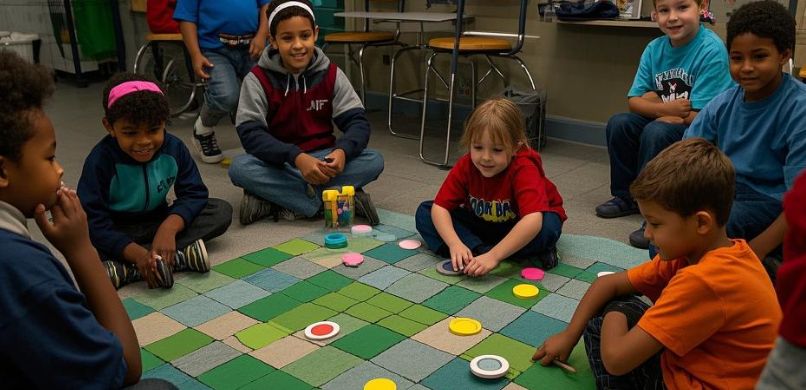Helping young children develop strong interpersonal skills is essential for their emotional and social well-being. It is particularly important for children starting school, as social interactions can help them overcome negative emotions such as anxiety, fear, and loneliness. By fostering a child’s ability to communicate and build relationships with others, parents can ensure that their child is well-equipped for social integration and overall development.
Encouraging Positive Social Traits
One of the first steps in helping children develop strong social skills is guiding them to adopt positive behaviors such as kindness, respect, and empathy. Teaching children to be friendly, polite, and considerate helps them build meaningful connections with others. According to a study published in Child Development (Denham et al., 2012), children who exhibit positive social behaviors at an early age tend to form better friendships and experience greater emotional well-being. Parents can model these behaviors at home, creating a supportive and caring environment that encourages their child to practice these traits with peers.

Building Confidence Through Interests and Hobbies
Another way to foster social development is by encouraging children to explore a variety of interests, hobbies, and talents. When children are confident in their abilities, they are more likely to approach others and engage in social situations. Research from Developmental Psychology (Rubin et al., 2006) shows that children with diverse interests are often more socially confident and willing to interact with different groups. Parents can help by introducing their children to different activities such as art, sports, or music, which also provide natural opportunities for socializing.
Creating Social Opportunities Outside of School
Parents should also ensure that children have ample opportunities to interact with their peers outside of school. Participating in community activities, visiting playgrounds, or attending group events like birthday parties can help children practice social skills in a relaxed setting. According to The Journal of Early Childhood Education (Ladd, 2005), these informal social settings provide a safe space for children to develop communication skills and make friends. By regularly organizing playdates or joining community groups, parents can help their children build relationships that enhance their social confidence.
Observing and Guiding Social Behavior
Parents should pay attention to their child's social behavior and interactions with others. By observing how their child communicates, shares, and cooperates with peers, parents can identify areas for improvement and provide gentle guidance. For example, if a child struggles with sharing, parents can use role-playing or other activities to teach them how to cooperate and take turns. Early Childhood Research Quarterly (Vaughn et al., 2003) suggests that timely and constructive feedback can greatly improve a child's ability to navigate social interactions.
Conclusion
In conclusion, creating opportunities for children to interact with others is essential for their emotional and social development. By encouraging positive behaviors, building their confidence, providing diverse social experiences, and offering guidance when necessary, parents can help their children form lasting relationships and navigate social challenges with ease. These early interactions play a significant role in preparing children for a successful school experience and beyond.
References
- Denham, S. A., et al. (2012). Emotional Development and Social Competence in Early Childhood. Child Development, 83(2), 222-236.
- Rubin, K. H., et al. (2006). Social Interaction and Children’s Peer Relationships. Developmental Psychology, 42(6), 1070-1083.
- Ladd, G. W. (2005). Social Competence and Peer Relationships in Early Childhood Education. The Journal of Early Childhood Education, 24(4), 290-298.
- Vaughn, B. E., et al. (2003). The Role of Social Skills in Early Childhood Development. Early Childhood Research Quarterly, 18(2), 103-121.